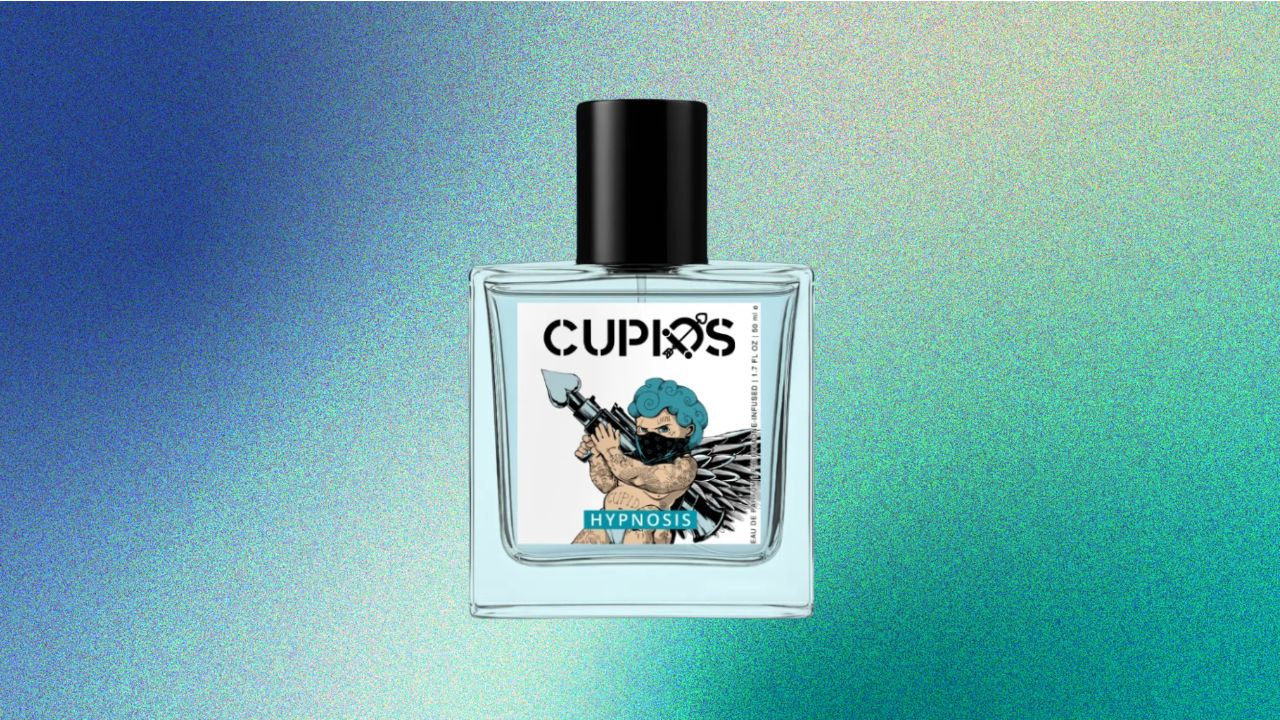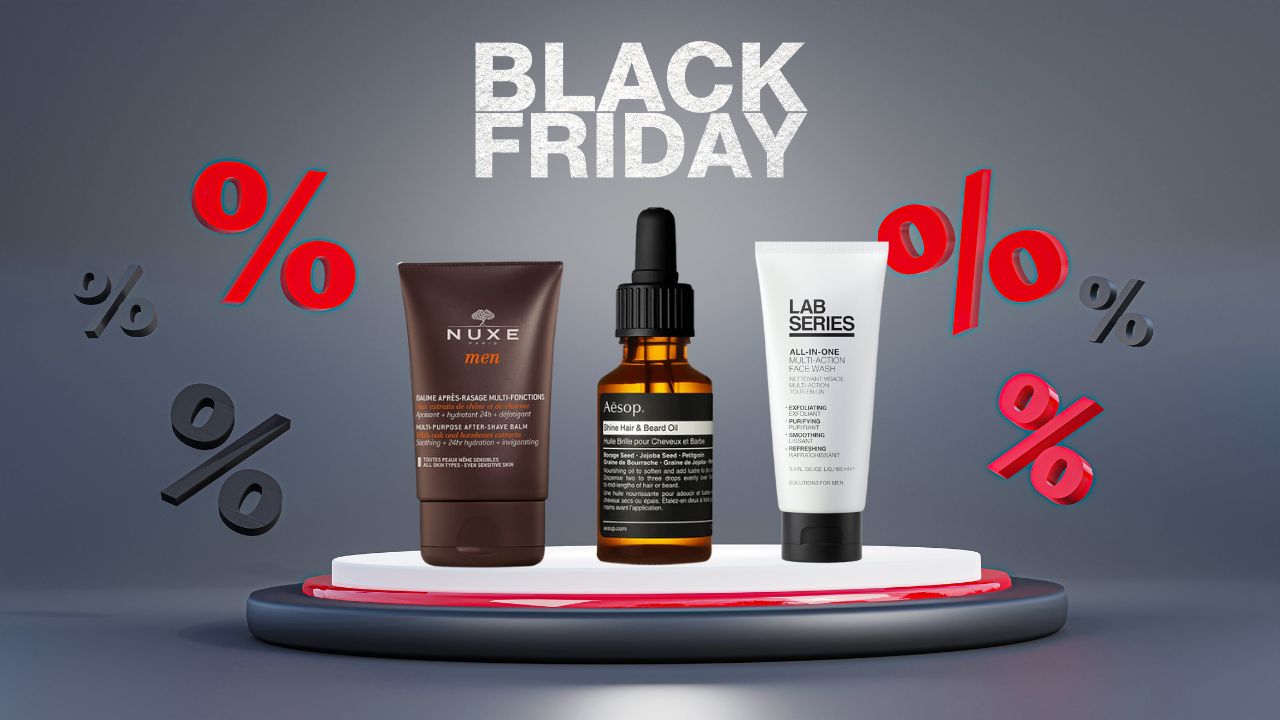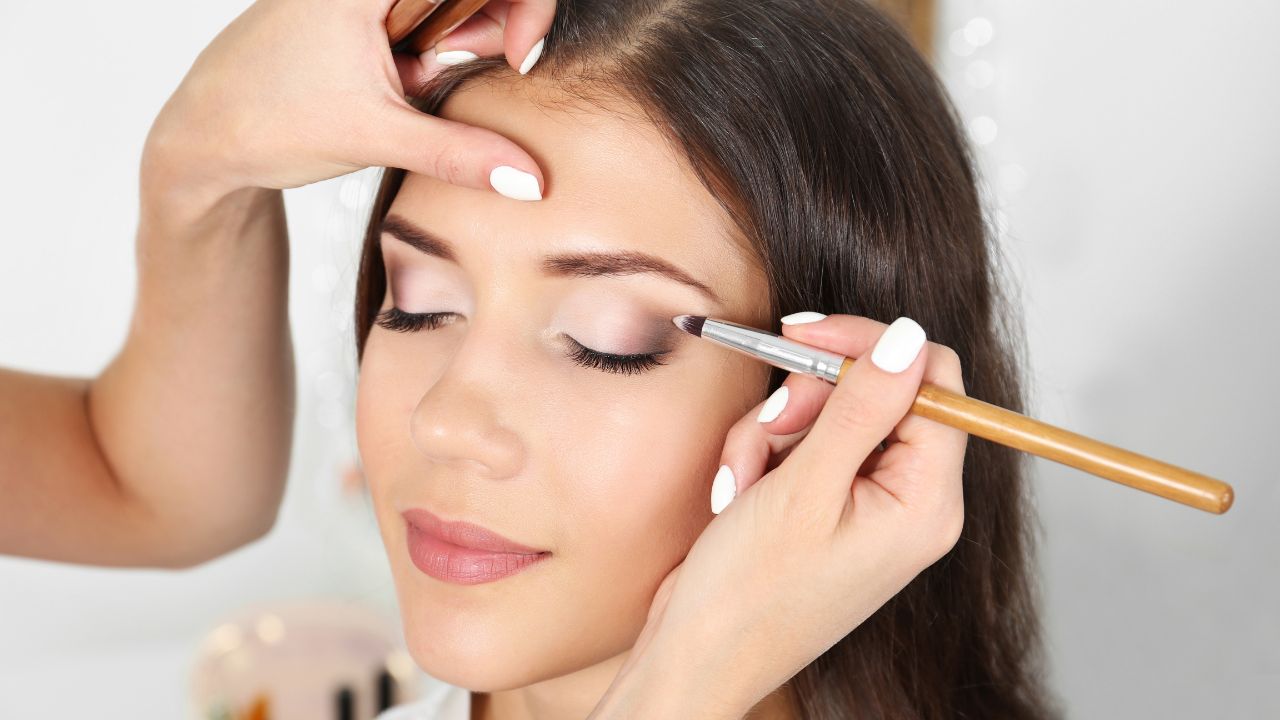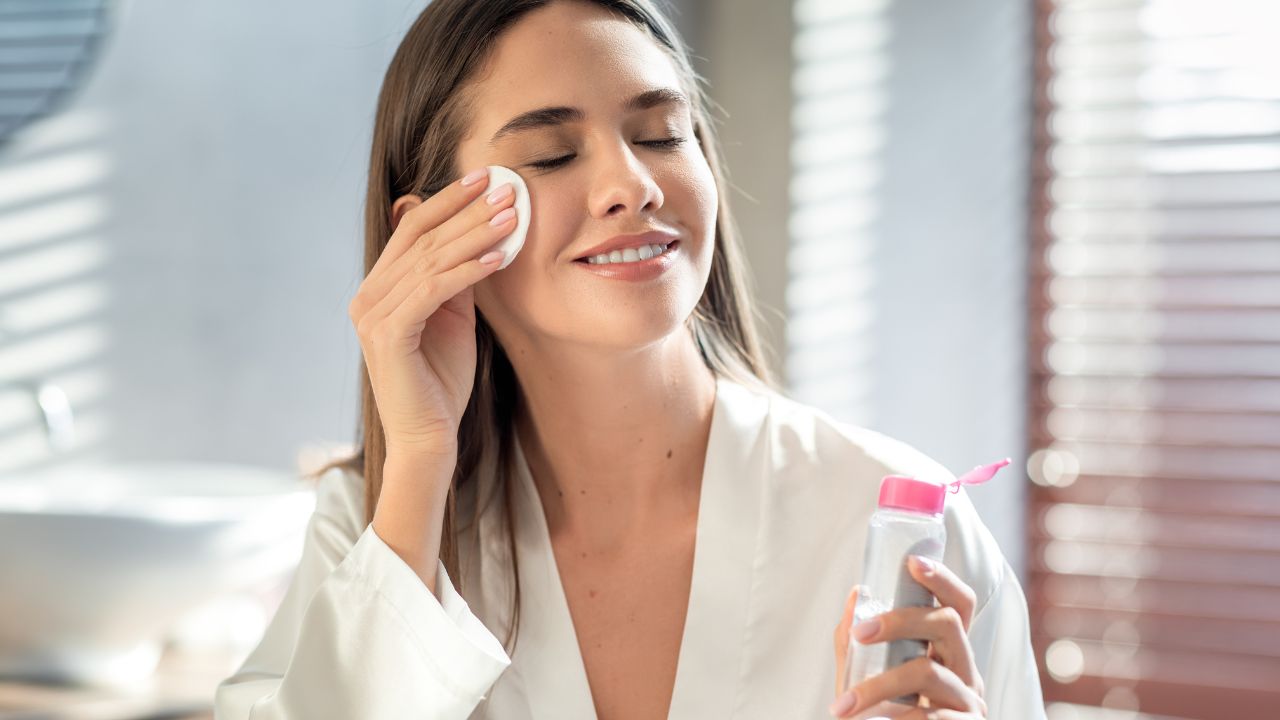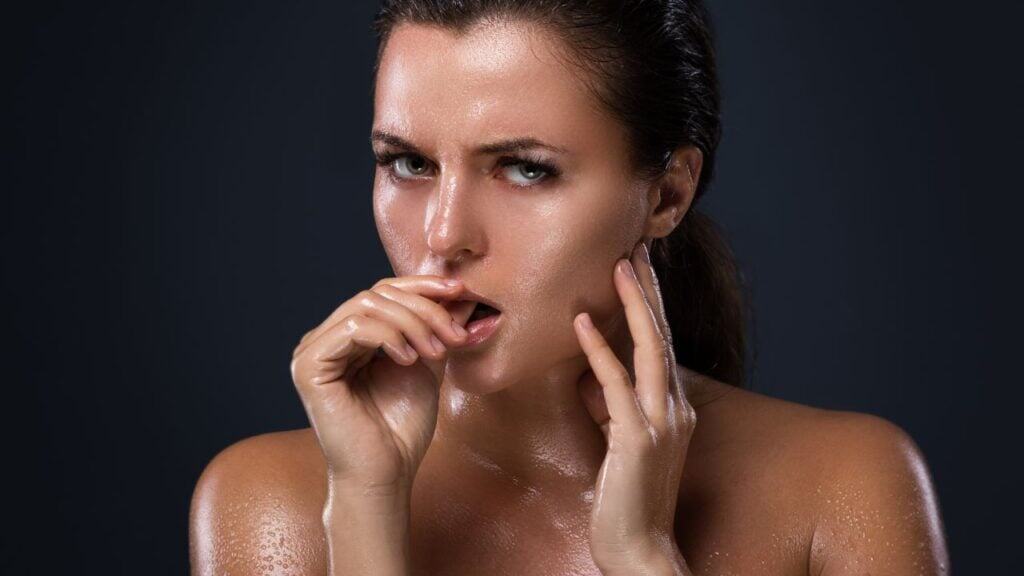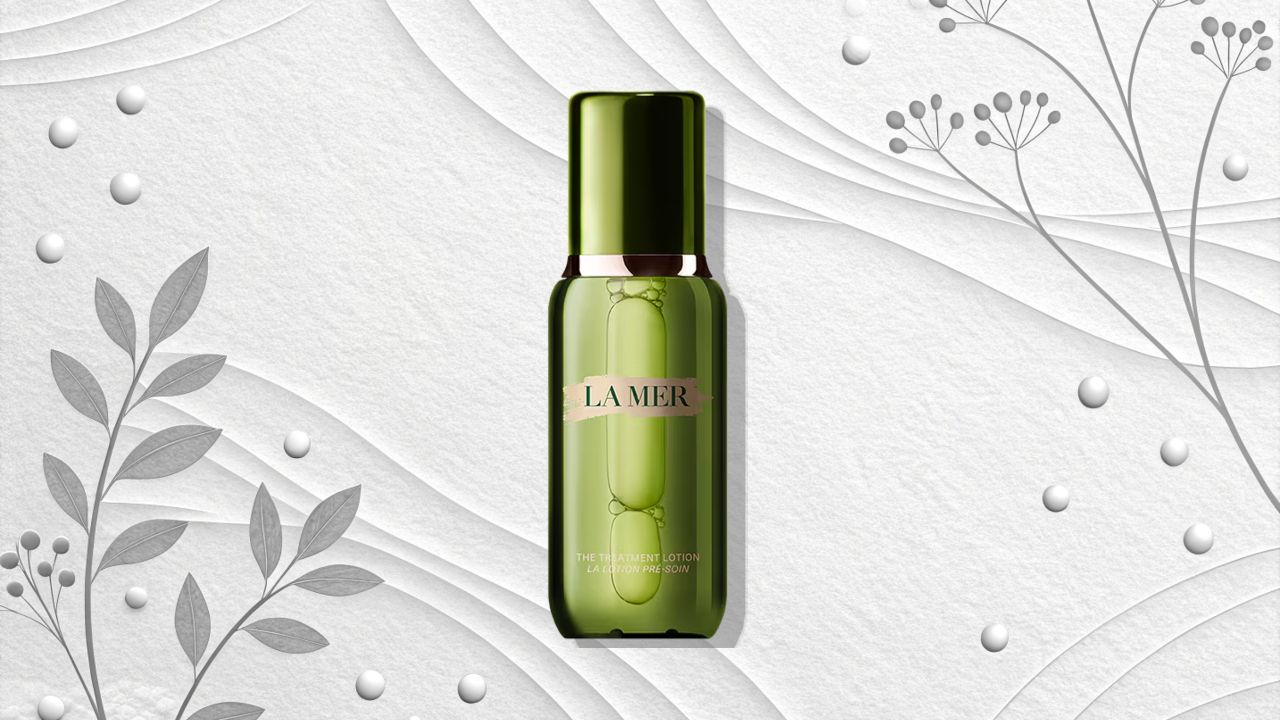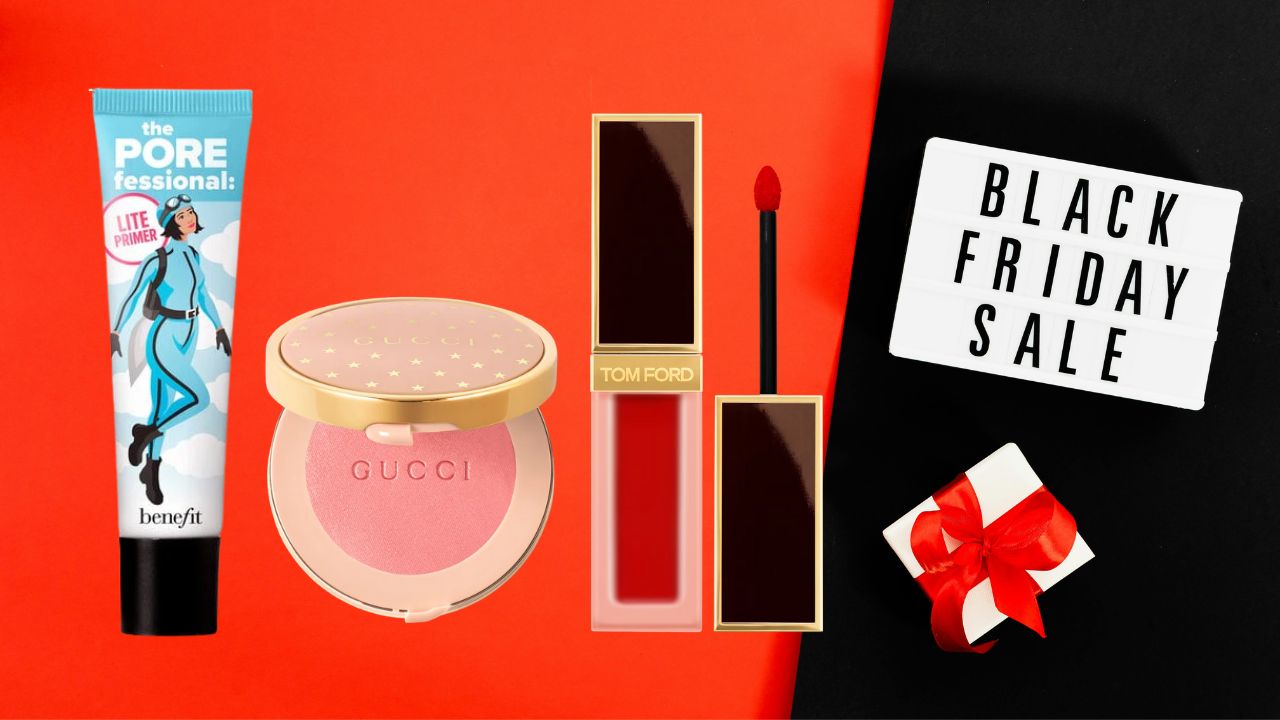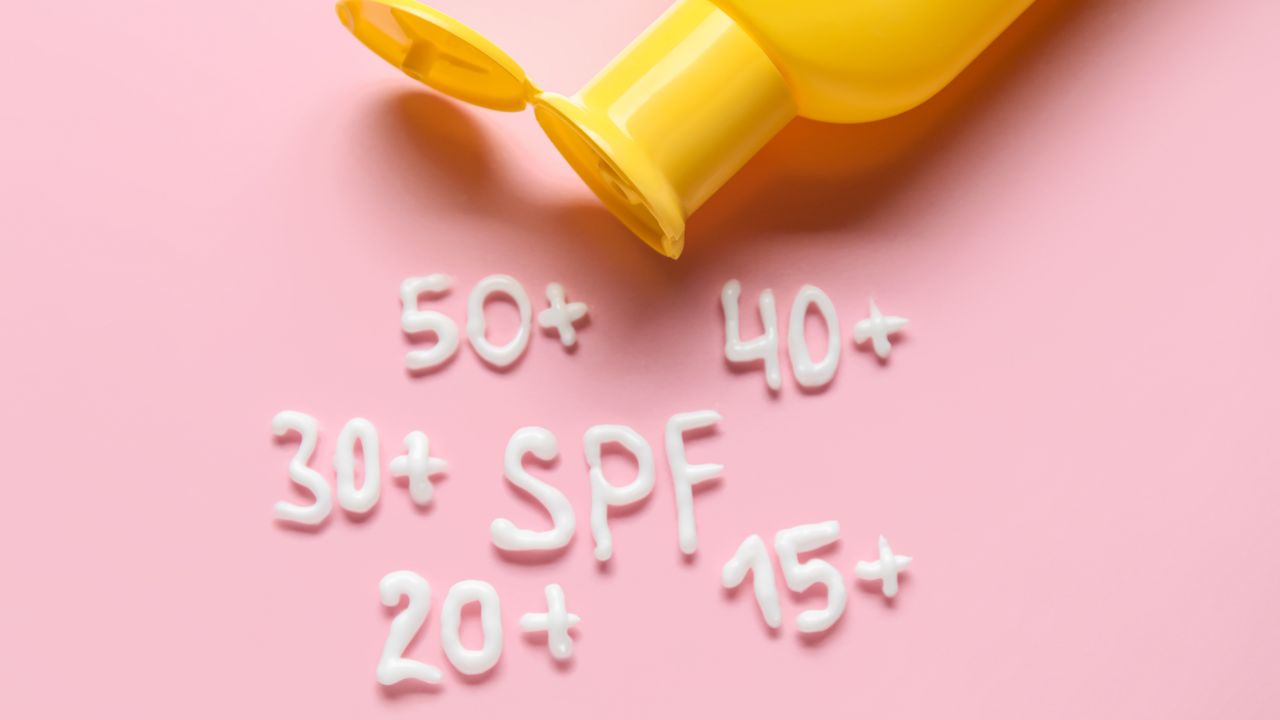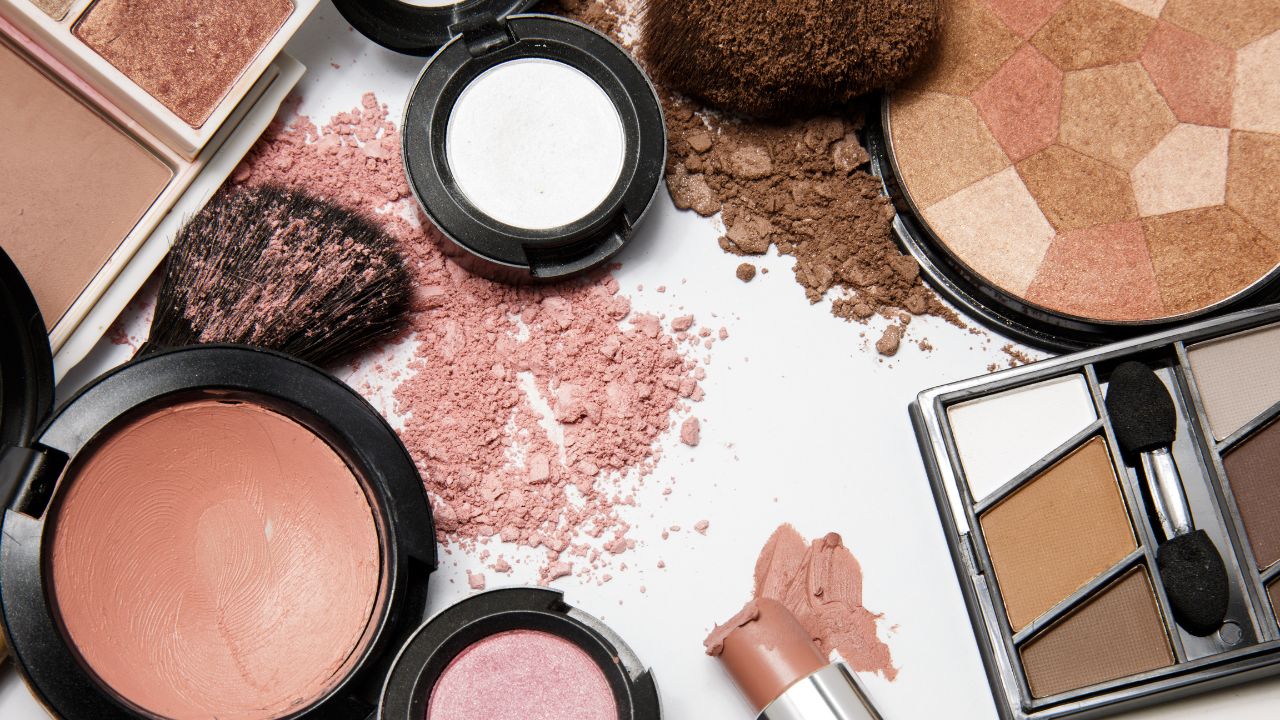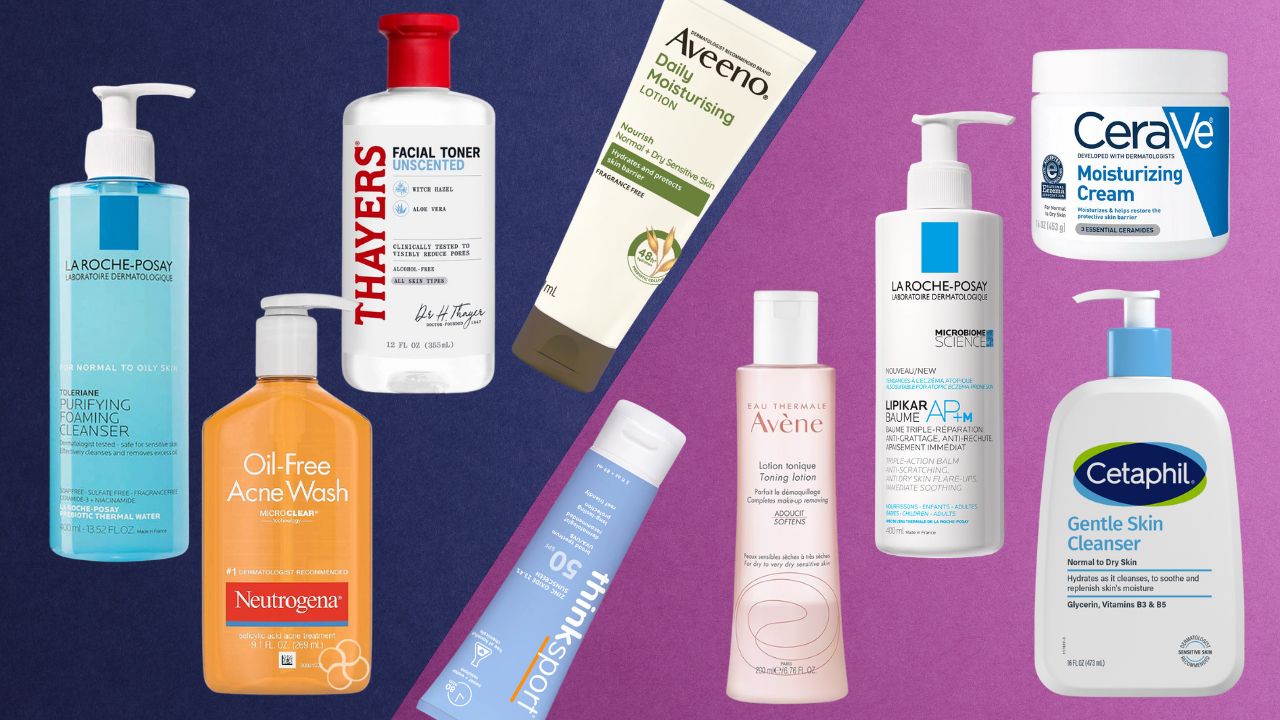Blog
Home / Perfume Stories / How to Make Perfume Without Alcohol: Your Ultimate Guide to Crafting Natural Scents
Categories
Recent Posts
- Which Day Has the Best Beauty Deals? Your Complete Guide to Shopping Smart in 2025
- Cupids Cologne Review: Does This Pheromone Fragrance Really Work? An Honest 30-Day Test
- Black Friday Aftershave Deals & Buying Guide 2025: Expert Tips for Smart Shopping
- How to Wear Red Lipstick: Expert Tips for Perfect Application and Long-Lasting Wear
- How to Do Eye Makeup Like a Pro: Step-by-Step Guide for Smokey Eyes, Big Eyes & More
How to Make Perfume Without Alcohol: Your Ultimate Guide to Crafting Natural Scents
0
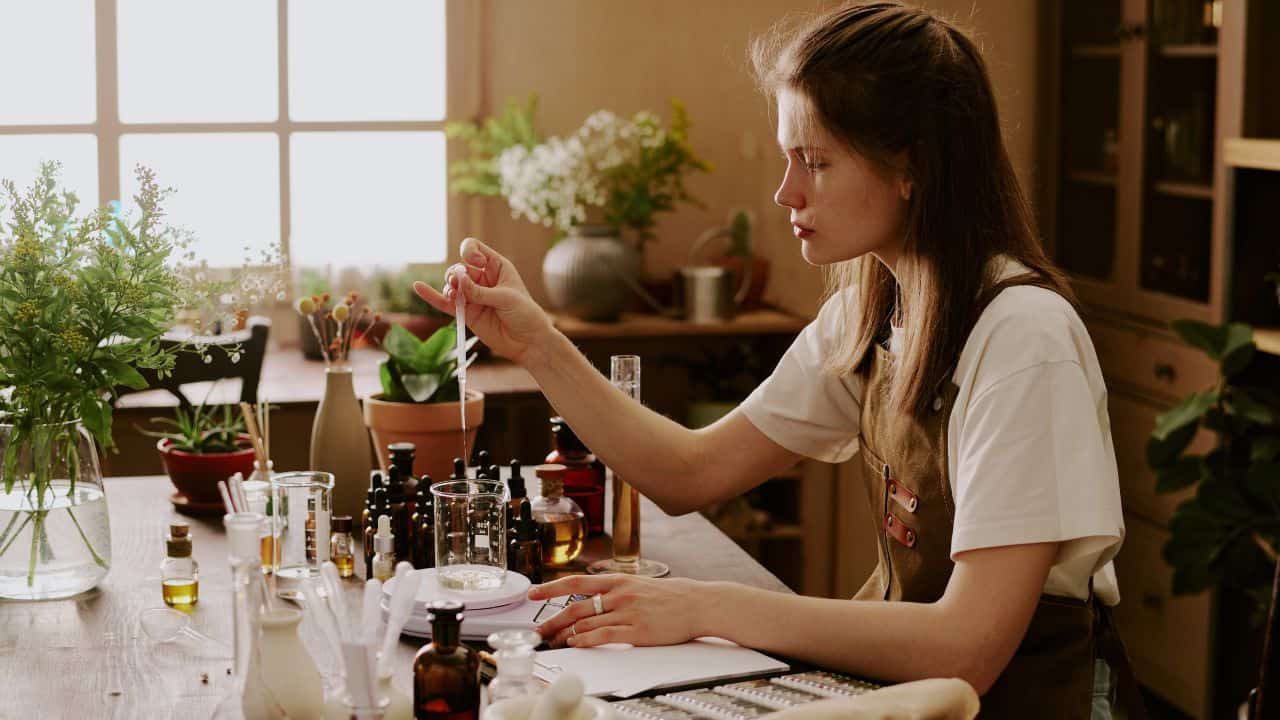
For over a decade, fragrance has been a passion, delving into the intricate dance of notes, sillage, and skin chemistry. There’s a quiet revolution happening in the fragrance world: the rise of alcohol-free perfumes. It’s not just a trend; it’s a mindful movement, driven by a desire for gentler formulas, longer-lasting scents, and a truly personalized aroma experience.
So, you’re curious about crafting your own signature scent, something uniquely you, without a drop of traditional alcohol? Excellent! You’ve landed in the right place. Forget overly complex chemistry sets. We’re about to dive into the art and science of how to make perfume without alcohol, transforming simple, natural ingredients into captivating, skin-friendly fragrances.
The Alcohol-Free Allure: Why Go Au Naturel?
Before we blend, let’s explore why so many are choosing an alcohol-free path. It’s not just about preference; there are genuine, compelling reasons to opt for a gentler approach:
- Skin’s Best Friend: Ever noticed a slight sting or dryness when you spray on your favorite fragrance? That’s often the alcohol at work. For those with sensitive skin, eczema, or a tendency towards dryness, alcohol can be irritating, stripping away natural oils.
- A Scent That Lingers, Naturally: Unlike alcohol, which evaporates quickly and carries the scent away, alternative bases allow fragrance notes to unfold gradually. This means your exquisite creation will cling to your skin longer, evolving beautifully throughout the day, offering a more intimate and enduring aromatic journey.
- The Truest Scent Story: Alcohol can sometimes alter the initial impression of a fragrance, creating a sharp burst that isn’t truly indicative of the underlying oils. Without it, the pure, unadulterated essence of your chosen aromatic ingredients can shine through from the very first breath, giving you a more authentic scent experience.
- Travel-Friendly & Sun-Safe: No more worries about flammability on flights or heightened sun sensitivity. Alcohol-free perfumes are generally safer for travel and less likely to increase your skin’s vulnerability to UV rays, making them perfect for sunny escapes.
Intrigued? Let’s get to the good stuff: making your own!
The Heart of the Matter: Your Alcohol-Free Perfume Bases
When learning how to make perfume without alcohol, the first step is choosing your base. This is the neutral canvas that will carry your chosen aromatic symphony. Here are the top contenders:
1. Carrier Oils: The Original Skin Huggers
This is perhaps the most popular and easiest method for DIY alcohol-free perfumes. Carrier oils dilute concentrated essential oils, making them safe for direct skin application while also providing nourishing benefits. They are excellent choices because they absorb well and help the scent last.
- Jojoba Oil: This is often a favorite! Technically a liquid wax, jojoba closely mimics your skin’s natural sebum, absorbing without greasiness. It’s odorless, stable, and won’t interfere with your carefully crafted fragrance. Think of it as the elegant workhorse of natural perfumery.
- Fractionated Coconut Oil: Lightweight, non-greasy, and always liquid (unlike virgin coconut oil), this is another fantastic, neutral choice. It’s easily absorbed and provides a silky texture.
- Sweet Almond Oil: A lovely, widely available oil that’s gentle and moisturizing. It has a very faint, pleasant aroma that typically blends well with most essential oils.
- Grapeseed Oil: Very light and easily absorbed, good for those who want minimal residue.
Pro Tip: Oil-based perfumes are typically best stored and applied with rollerball bottles. This allows for targeted application to pulse points (wrists, neck, behind ears), creating a more intimate scent bubble. Plus, oil tends to clog spray mechanisms, so rollerballs are your practical ally here.
2. Hydrosols / Floral Waters: The Refreshing Mist
For a lighter, more ethereal fragrance experience, hydrosols are delightful. These are the aromatic waters collected during the steam distillation of plants (the same process that yields essential oils). They carry a subtle version of the plant’s scent along with its beneficial properties.
- Rose Hydrosol: Classic, romantic, and incredibly soothing.
- Lavender Hydrosol: Calming and universally cherished.
- Orange Blossom Hydrosol: Bright, uplifting, and sweetly floral.
Pro Tip: While a hydrosol alone will give a very light, temporary scent, you can enhance it by adding a tiny amount of essential oils. You’ll need a solubilizer (like Polysorbate 20 or natural alternatives like plant-derived polyglyceryl-10 laurate) to help the essential oils disperse evenly in the water-based hydrosol and prevent separation. You’ll also need a broad-spectrum preservative to prevent microbial growth, as water-based formulas are prone to contamination.
3. Solid Perfumes: The Portable Potion
For a concentrated, touch-up friendly fragrance, solid perfumes are simply enchanting. They use a blend of waxes and butters to hold the scent, making them perfect for dabbing on the go.
- Beeswax: The traditional choice, providing structure and a protective barrier.
- Shea Butter / Cocoa Butter: Adds a creamy texture and extra skin-loving benefits.
- Jojoba Oil: Again, a great addition to help melt and carry the fragrance oils.
Crafting Your Signature Scent: The Olfactory Journey
Now for the fun part: mixing your aroma! Think of perfumery as building a melody with scent notes. Fragrances are typically composed of three “notes” that unfold over time:
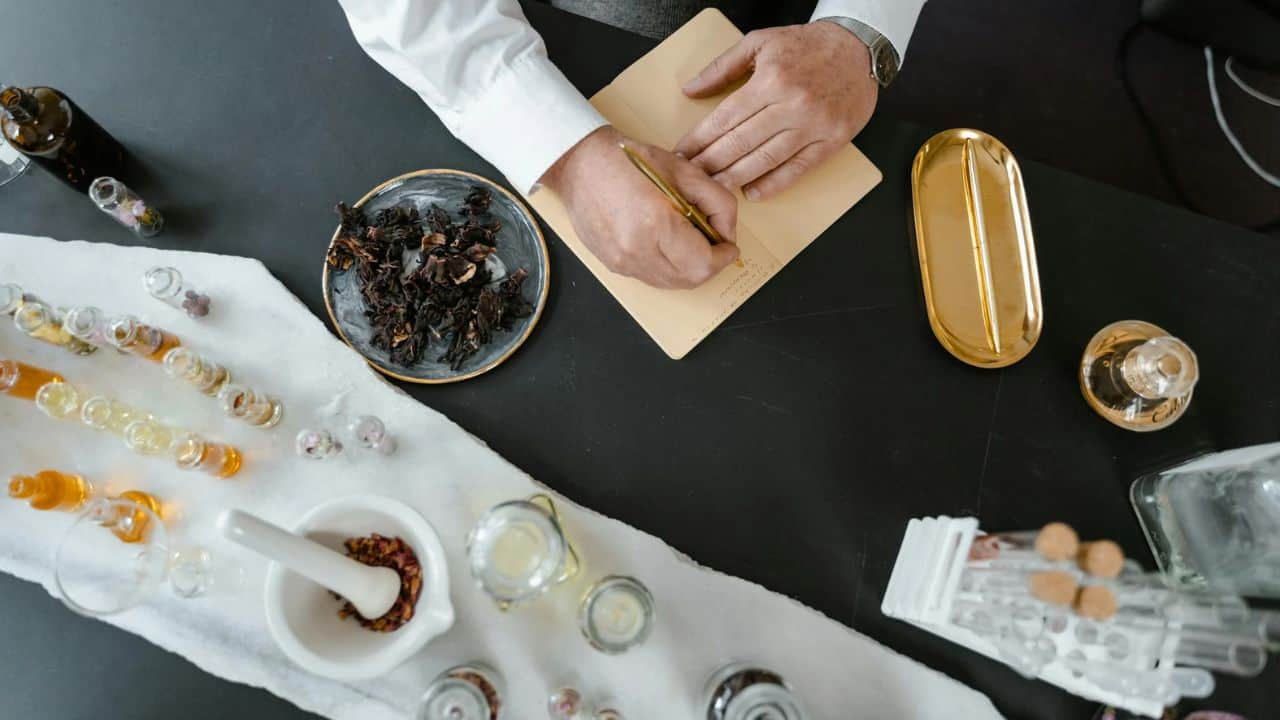
- Top Notes (The Enthusiastic Greeting): These are the first scents you detect. They’re light, fresh, and evaporate quickly, lasting about 5-15 minutes. Think citrus (lemon, bergamot, orange), mint (peppermint, spearmint), or delicate herbs (lavender, basil).
- Middle Notes (The Heart of the Story): Also known as “heart notes,” these emerge as the top notes fade, forming the core character of your perfume. They last longer, usually 30 minutes to an hour. Common middle notes include florals (rose, jasmine, geranium, ylang-ylang) and spices (cinnamon, nutmeg).
- Base Notes (The Lingering Embrace): These are the grounding, deepest scents that emerge last and have the longest staying power, often lingering for several hours. They provide depth and help “fix” the lighter notes. Examples include woody scents (sandalwood, cedarwood), earthy aromas (patchouli, vetiver), resins (frankincense, myrrh), and rich aromas (vanilla, amber).
A Simple Blending Ratio (for 10ml rollerball oil perfume):
A great starting point for your essential oil blend is typically 20-30 drops total for a 10ml rollerball bottle, diluted in your chosen carrier oil. A good ratio for creating a balanced scent is:
- 20% Top Notes (4-6 drops)
- 50% Middle Notes (10-15 drops)
- 30% Base Notes (6-9 drops)
This is a guiding principle, not a rigid rule! Experimentation is key to finding your unique aroma.
DIY How to Make Perfume Without Alcohol Recipes
Recipe 1: The “Everyday Elegance” Oil Roll-On
This is perfect for a subtle, long-lasting personal fragrance.
What You’ll Need:
- 10ml glass rollerball bottle (dark glass is best to protect oils from light)
- Jojoba oil (or Fractionated Coconut Oil)
- Droppers/pipettes
- Small funnel (optional, but helpful!)
- Essential Oils:
- Top: 5 drops Bergamot (Citrus aurantium bergamia) – uplifting, fresh
- Middle: 12 drops Geranium (Pelargonium graveolens) – floral, balancing
- Base: 8 drops Sandalwood (Santalum album) – woody, grounding
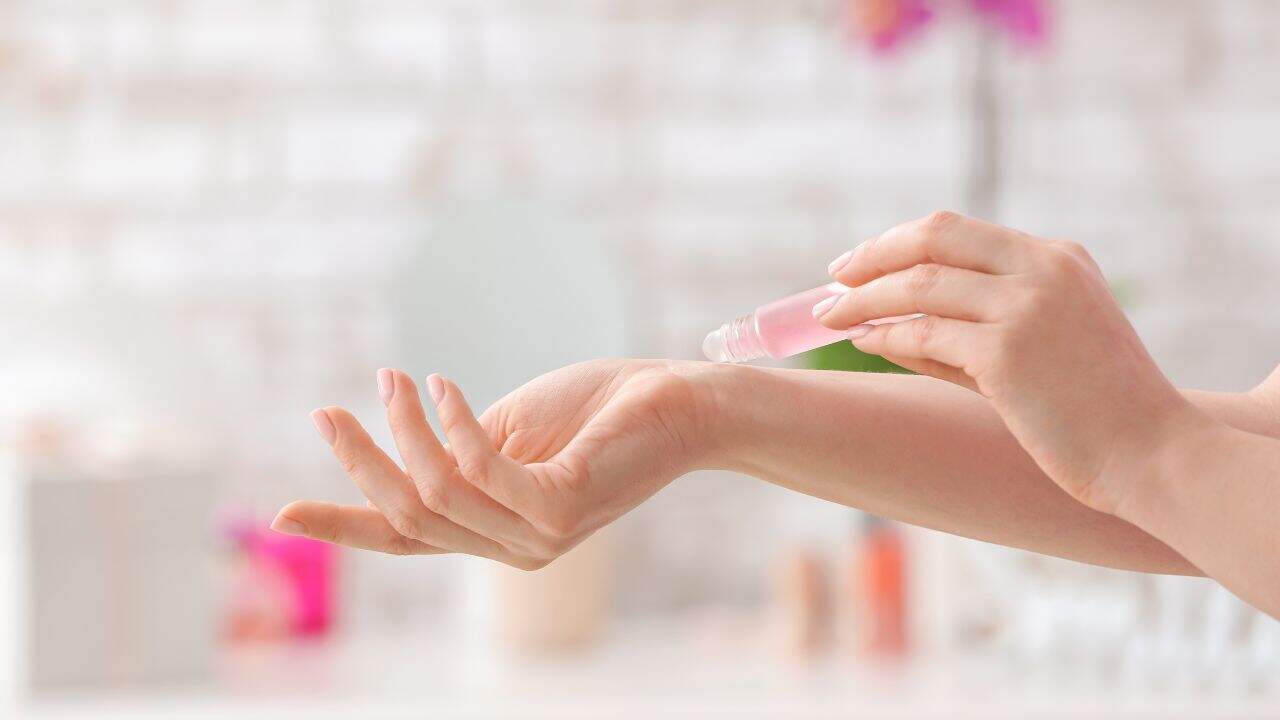
How to Make It:
- Using a dropper, carefully add your base notes (Sandalwood) to the empty rollerball bottle.
- Next, add your middle notes (Geranium).
- Finally, add your top notes (Bergamot).
- Carefully fill the rest of the bottle with your chosen carrier oil (Jojoba or Fractionated Coconut Oil), leaving a tiny bit of space at the top for the rollerball insert.
- Insert the rollerball, cap the bottle tightly, and gently roll it between your palms for about 30 seconds to mix the oils.
- The Patience Factor
- This is crucial! For the best scent development, let your perfume “marry” for at least 24-48 hours, or even a week.
- The longer it sits, the more the notes will meld and deepen, creating a more complex and harmonious fragrance.
- Store it in a cool, dark place during this time.
Recipe 2: The “Refresh & Revive” Hydrosol Spray
For a lighter, more refreshing body mist (requires additional considerations for stability).
What You’ll Need:
- 50ml dark glass spray bottle
- 45ml Rose Hydrosol (or Lavender Hydrosol)
- 5ml Solubilizer (e.g., Polysorbate 20)
- 0.5g Broad-spectrum preservative (e.g., Liquid Germall Plus, Geogard 221 – always follow manufacturer’s instructions for usage rates!)
- Small measuring beaker
- Essential Oils:
- Top: 10 drops Sweet Orange (Citrus sinensis) – cheerful, bright
- Middle: 8 drops Lavender (Lavandula angustifolia) – calming, floral
- Base: 2 drops Frankincense (Boswellia carterii) – resinous, grounding
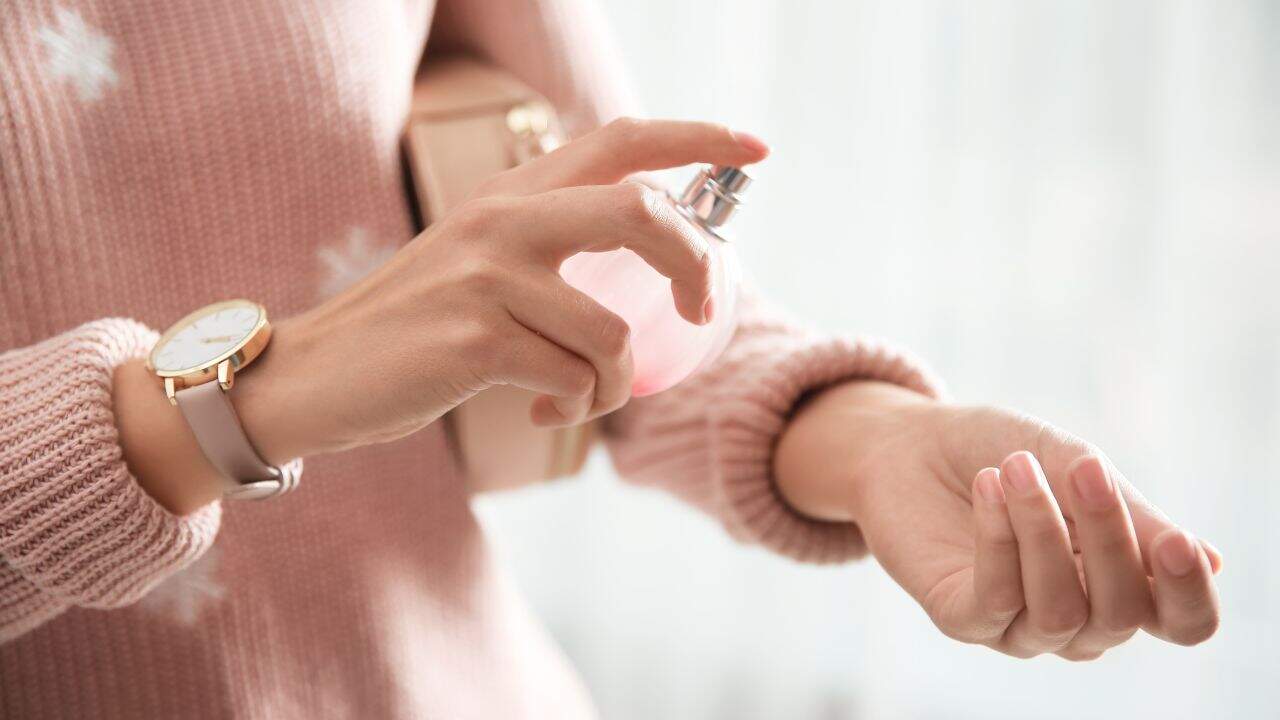
How to Make It:
- In your measuring beaker, combine the essential oils with the solubilizer. Stir gently until fully mixed (this helps the oils disperse in the water).
- Add the broad-spectrum preservative to the essential oil/solubilizer mixture and stir well.
- Pour this mixture into your spray bottle.
- Carefully fill the rest of the bottle with your chosen hydrosol.
- Cap the bottle and shake vigorously for 30 seconds to ensure everything is thoroughly blended.
- Store in a cool, dark place. Shake well before each use.
Recipe 3: The “Solid Sensation” Portable Balm
Perfect for dabbing fragrance onto pulse points anytime, anywhere.
What You’ll Need:
- Small, clean tin or compact container (e.g., lip balm tin)
- 1 tablespoon Beeswax pellets
- 2 tablespoons Jojoba oil (or Sweet Almond Oil)
- Small heat-safe glass measuring cup or bowl
- Small saucepan for a double boiler setup
- Stirring stick or spoon
- Essential Oils:
- Top: 4 drops Lemon (Citrus limon) – zesty, invigorating
- Middle: 8 drops Ylang-Ylang (Cananga odorata) – exotic, sensual
- Base: 6 drops Patchouli (Pogostemon cablin) – earthy, rich
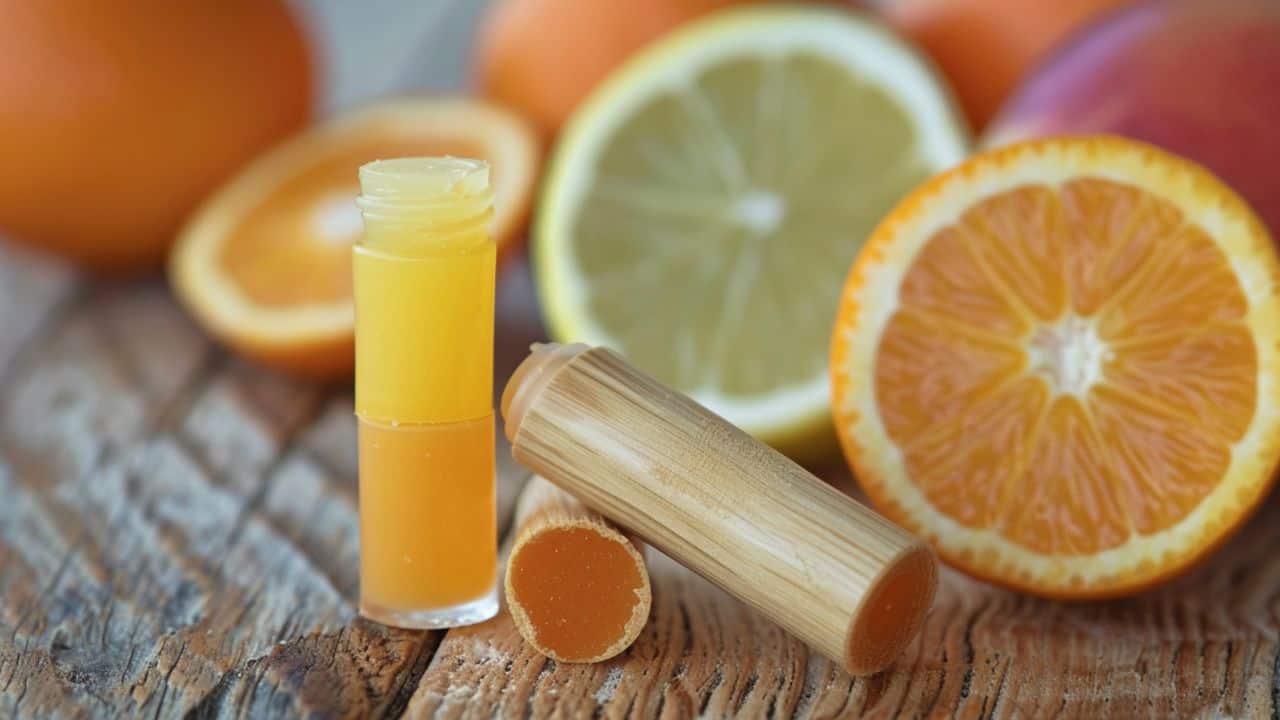
How to Make It:
- Create a double boiler: place your glass measuring cup with beeswax and jojoba oil into a saucepan filled with a few inches of water. Heat gently over low-medium heat until the beeswax fully melts, stirring occasionally.
- Once melted, remove the glass cup from the heat.
- Let the mixture cool for a minute or two until it’s still liquid but no longer piping hot. This is crucial to prevent the essential oils from evaporating too quickly.
- Add your essential oils (Patchouli, then Ylang-Ylang, then Lemon) to the melted wax/oil mixture and stir thoroughly.
- Carefully pour the liquid into your tin or compact container.
- Let it cool completely at room temperature (this might take an hour or two) until it solidifies. Do not put it in the fridge, as it can cause cracking.
- Once solid, cap your portable perfume and it’s ready to use!
Essential Safety & Storage Tips for Your Alcohol-Free Perfume
Congratulations, you’re a perfumer! But with great power comes great responsibility (and a few key safety tips):
Dilution is Key
Essential oils are incredibly potent. Never apply undiluted essential oils directly to your skin. The carrier oil ratios provided are general guidelines; a 2% dilution (around 10-12 drops per 10ml carrier) is a common safe recommendation for most skin types for daily use. For facial use or very sensitive skin, a 1% dilution might be preferred. When in doubt, less is more!
Patch Test, Always!
Before slathering your new creation all over, perform a patch test. Apply a tiny amount to a discreet area of skin (like your inner elbow) and wait 24 hours to check for any irritation or allergic reaction.
Quality Matters
Invest in high-quality, pure essential oils from reputable suppliers. Purity ensures not only a better scent but also safer skin application.
Dark Glass, Cool Place
Light and heat are the enemies of natural fragrances. Always store your alcohol-free perfumes in dark glass bottles (amber or cobalt blue are ideal) and keep them in a cool, dark spot, away from direct sunlight and temperature fluctuations. This preserves their integrity and extends their shelf life.
Shelf Life
Oil-based perfumes generally last 6 months to 1 year. Water-based formulas (hydrosols) with preservatives typically last longer, often several months to a year, but still have a shorter shelf life than their oil counterparts. Solid perfumes, due to their wax base, can often last 1-2 years. Trust your nose: if the scent changes or smells “off,” it’s time to create a fresh batch.
Child & Pet Safety
Keep essential oils and your homemade perfumes out of reach of children and pets. Certain essential oils can be toxic if ingested or applied inappropriately.
Pregnancy & Medical Conditions
If you are pregnant, nursing, or have a medical condition, consult with a healthcare professional before using essential oils. Some oils are not recommended during these times.
Unlock Your Inner Alchemist: Your Scent, Your Story
Creating your own perfume without alcohol is more than just a DIY project; it’s an empowering journey into self-expression. It allows you to tailor a fragrance that resonates deeply with your personal style, values, and even your mood. You control the ingredients, embrace natural goodness, and craft a scent that truly tells your story.
So, go ahead, gather your oils, embrace your inner perfumer, and unlock a world of personalized fragrance that’s gentle on your skin and captivating to your senses. What beautiful aroma will you create today?
Related posts
Which Day Has the Best Beauty Deals? Your Complete Guide to Shopping Smart in 2025
Every beauty enthusiast faces the same dilemma: when should I buy beauty products to get the absolute best beauty deals without sacrifi...
Cupids Cologne Review: Does This Pheromone Fragrance Really Work? An Honest 30-Day Test
The world of pheromone colognes has exploded in recent years, with countless brands promising everything from instant attraction to mag...
Black Friday Aftershave Deals & Buying Guide 2025: Expert Tips for Smart Shopping
Black Friday 2025 presents the perfect opportunity to upgrade your post-shave skincare routine without breaking the bank. Whether you'r...
How to Wear Red Lipstick: Expert Tips for Perfect Application and Long-Lasting Wear
Nothing makes a statement quite like a bold red lip. It’s the ultimate power move—elegant, timeless, and undeniably captivating. Red lipstick has historically been a symbol of courage and defiance, empowering wearers through generations. But let’s be honest, wearing red lipstick can feel genuinely intimidating. What if it smudges? What if it bleeds? What if you choose the wrong shade for your complexion?
How to Do Eye Makeup Like a Pro: Step-by-Step Guide for Smokey Eyes, Big Eyes & More
This beginner-friendly guide will walk you through every step—from choosing the right brushes to perfecting your crease and liner. No jargon, no pressure—just clear, practical tips that help you create looks that highlight your eyes and express your style.
How to Use Toner: A Step-by-Step Guide for Flawless Skin
In this expert-backed guide, we’ll show you exactly how to use toner the right way, ensuring you get maximum skin benefits while avoiding common mistakes. Let’s dive in!
Essential Body Care Routine for Oily Skin: 7 Smart Steps for a Balanced, Happy Glow
With the right body care routine, tailored specifically for oily skin, you can find that perfect sweet spot between a healthy glow and unwanted greasiness. And no, you don’t need a crazy 12-step ritual or a celebrity facialist. Just a few smart product swaps, some know-how about ingredients, and a little consistency.
La Mer The Treatment Lotion: How to Use It to Soothe Sensitivity and Redness
Let’s talk about La Mer The Treatment Lotion—what it is, how to use it, and how it fits into a full La Mer ritual that helps reduce redness, restore hydration, and calm sensitivity like a pro.
The Best Makeup Products to Invest In During Black Friday 2025: Investment Pieces Worth Every Penny
Black Friday 2025 is coming November 28th, and if you're a beauty enthusiast looking to upgrade your makeup collection without breaking...
Understanding SPF: How to Choose the Best Protection for Your Skin
The undeniable truth is, UV damage affects everyone—regardless of skin tone, prevailing season, or whether you’re spending your entire day indoors or outside. If you’re unsure which SPF you should be consistently using or precisely how often to reapply it, you are certainly not alone. Let’s systematically break down all these essential aspects so you can confidently safeguard your delicate skin every single day.
Makeup Essentials: Must-Have Products for Every Beauty Routine
Whether you’re a complete beginner or seeking to streamline your current collection, this definitive guide deconstructs the indispensable products for a well-rounded, everyday cosmetic regimen. No gimmicks, no excess—just practical, proven selections that elevate your look without cluttering your vanity. This article aims to empower you to create a core, versatile kit.
The Best Pregnancy-Safe Skin Care Products: Top Picks for Expecting Mothers
Navigating the world of skincare during pregnancy can be daunting, with countless products and ingredients to consider. But fear not! We’ve curated a list of the best pregnancy-safe skincare products to keep you glowing and ensure both you and your baby remain safe.
Comments



